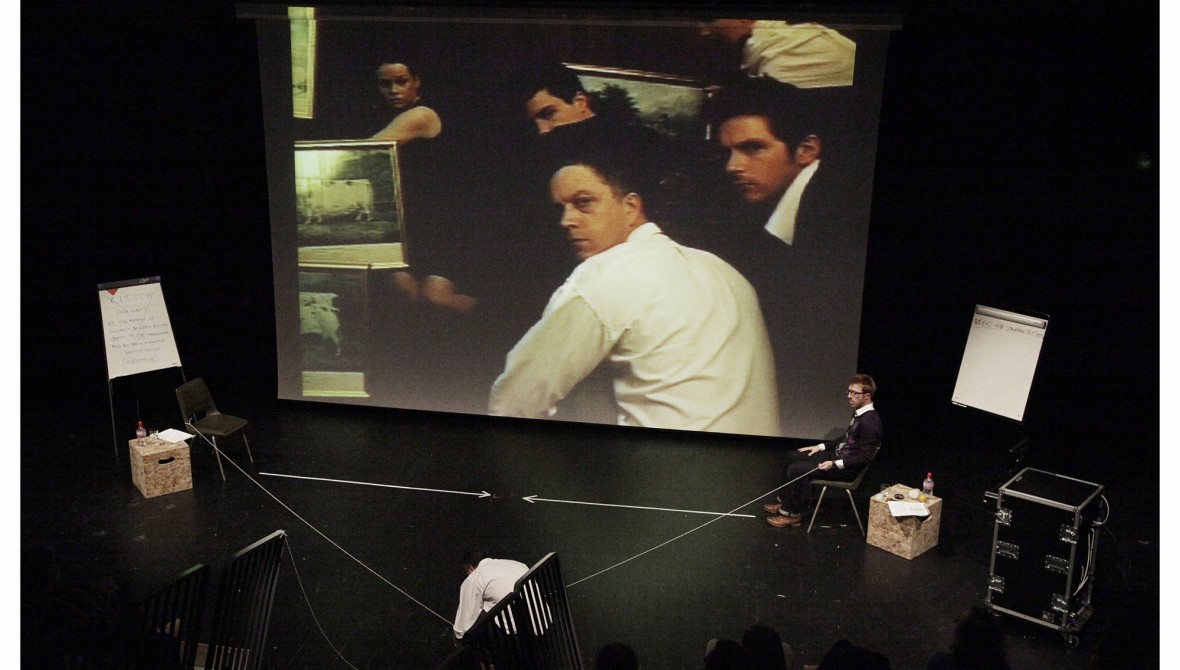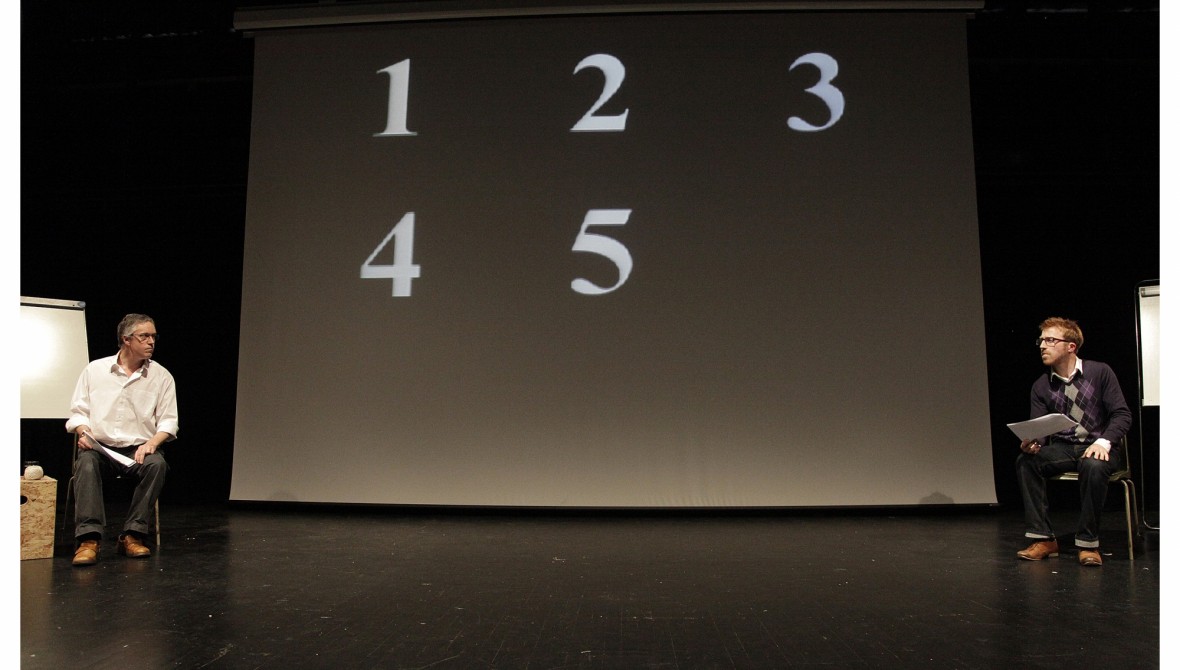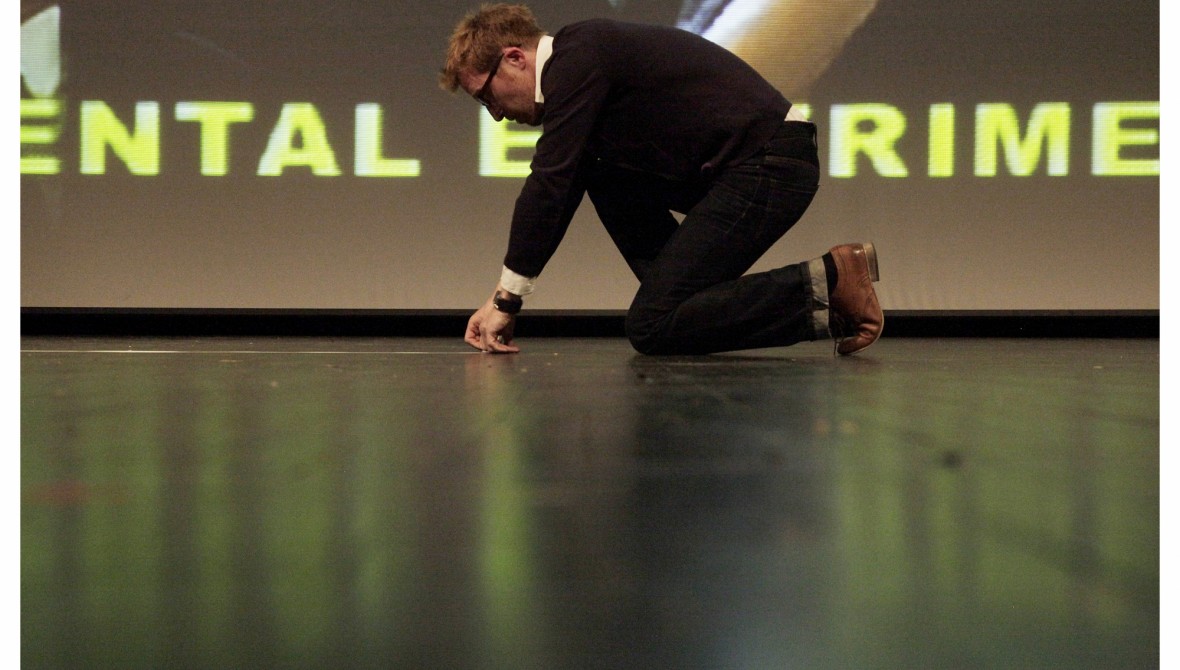This is not a Performance or a Lecture!
Instigating discussion about the intersection between performance and visual practice. Read more

(Photo credit: Julian Hughes)

(Photo credit: Julian Hughes)

(Photo credit: Julian Hughes)
Richard Foreman has been creating avant-garde theatre since the founding of his Ontological Hysteric Theatre Company in 1968. His 2008 production Deep Trance Behaviour in Potatoland combined video footage shot in the UK and Japan with live onstage action. How To Write A Play, meanwhile, is an essay by Foreman first published in 1977, which elucidates his unusual approach to making performance.
Inspired by these two works, Swettenham and Pinchbeck's How to Write a Play Under the Influence of Deep Trance explores Foreman's video material in the context of - and sometimes in direct conflict with - his thoughts on what is needed to "make a kind of beauty that isn't an ALTERNATIVE to a certain environment", as laid out in How to Write a Play.
Neal Swettenham worked for many years as an actor and musical director before taking up a post as lecturer in drama at Loughborough University in 2003. He also curates the Richard Foreman Research Archive, which contains, amongst other things, recordings of many of Foreman’s own productions, offering a unique opportunity to study his work in performance.
Michael Pinchbeck is a writer, live artist and performance maker based in Nottingham. His work weaves together different threads into a dynamic narrative that operates across time and space, from theatres to galleries, parked cars to park benches. He co-founded Metro-Boulot-Dodo in 1997 after studying Theatre and Creative Writing at Lancaster University. In 2004, he began a five-year live art project – The Long and Winding Road (2004-09) – that toured to ICA (London), Ikon (Birmingham) and The Bluecoat (Liverpool). He holds a PhD from Loughborough University.
Instigating discussion about the intersection between performance and visual practice. Read more